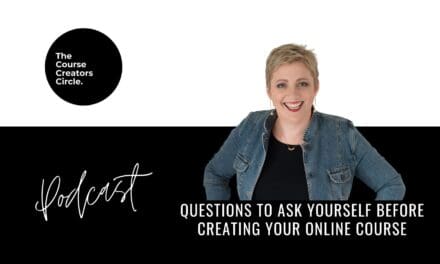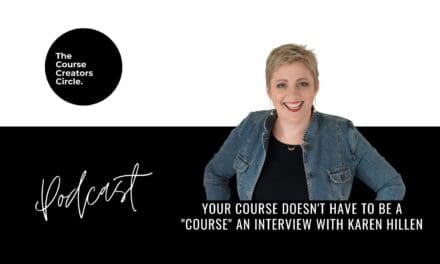As course creators, we all dream of reaching a wider audience, expanding our offerings, and ultimately increasing our revenue. However, as we scale, we often find ourselves juggling the delicate balance between growing our reach and maintaining the high standards our students expect.
The good news is—it’s not impossible! In today’s session, I’ll be sharing strategies to help you scale effectively while keeping your content engaging, up-to-date, and relevant.
What Does It Mean to Scale a Course?
At its core, scaling means expanding your course’s reach to a larger audience, which often involves creating more content and increasing revenue streams. However, this expansion comes with challenges, especially around maintaining the quality of content while managing an increased workload.
As you grow, it’s easy for certain things to slip through the cracks—like slower delivery processes due to a higher student count or overlooking updates to landing pages and marketing materials. However successful scaling is all about finding the balance between growth and quality.
Consistency is Key
First and foremost, consistency is key in every aspect of course creation. To maintain the quality of your content, you need to regularly review and update it. Keeping up with the latest industry trends and student needs is essential to ensuring your courses remain relevant and valuable. Trust me, as someone in marketing, I know how important it is to stay current!
Engaging and interactive content is another critical element when scaling. You don’t just want to deliver information—you want to captivate your audience. Including multimedia elements like quizzes, discussion forums, and live lessons is an excellent way to enhance the learning experience. For example, one of the ways I scaled my own business was by turning my courses into a membership that offers live Q&As and targeted help.
The Power of Feedback
Another vital part of scaling is having a feedback loop. Regularly gathering feedback from your students helps you make informed decisions about course updates and future offerings. Your students will tell you what’s working, what needs clarification, and what they want to learn next. In fact, in my membership, those live Q&As have been invaluable for highlighting areas I hadn’t considered.
Efficient Delivery Methods
When it comes to delivery, having the right systems in place is essential. A solid Learning Management System (LMS) will help you handle more students without losing that personal touch. I’m a Thinkific expert, so I use their platform to ensure smooth delivery, but there are many great tools out there to explore.
Automated systems like email drip sequences (think MailerLite) also help maintain that personal connection with your students, even as you scale. By reminding them to come back and continue learning, you maintain engagement and drive completion rates.
Offering Different Levels of Support
As your student base grows, offering different levels of support becomes crucial. I often recommend offering your courses in three ways:
- Self-paced: Let students take the course at their own pace.
- Membership: Offer added support and opportunities to ask questions.
- Live sessions: Engage with students in real time, allowing them to interact with you directly.
This tiered approach not only adds value to your students but also allows you to scale efficiently without being overwhelmed by one-on-one interactions.
Time Management and Technology
Let’s talk about time management, a key factor in scaling effectively. Most of us get into this business to monetise our knowledge, and reaching a wider audience means managing our time wisely. Utilise tools like time-blocking sheets and content checklists both available in The Course Creator Circle Hub to keep your workflow efficient.
Leveraging the right technology is a game-changer. Tools like Descript have revolutionised video and podcast editing, making it simpler and faster than ever before. AI-powered tools can assist with writing lesson introductions, creating timestamps, and even generating transcripts, saving you hours of work.
Anticipating Challenges
Scaling does come with its challenges. Increased student inquiries, potential glitches from new technologies, and additional administrative work are just a few. But with strategies in place, like using reports from your LMS to track student progress, you can anticipate and tackle these issues before they impact your course quality.
Focus on Retention
Finally, let’s not forget about student retention. It’s much easier to re-engage a current student for your next course than to attract a new one. So, keep your students motivated to complete your courses and engage with your future content. Using tools like Thinkific’s power-ups helps enhance the learning experience and keeps students coming back for more.
Start Small and Scale Gradually
Scaling doesn’t have to happen overnight. Start small—with one core offering—and expand gradually. If you’re considering a subscription-based model, you don’t need all 12 months of content ready to go. Focus on the first few months, and expand as you receive feedback and grow.
Gather feedback from your current students about what they want to learn next, and build from there. You’ll find that scaling is much easier when you’re meeting the evolving needs of your audience.
Leveraging Automation and Support Systems
Make sure you have the right automation and support systems in place. Email systems that integrate with your LMS, like MailerLite, allow you to maintain personalised communication with students. And don’t forget about the potential of AI chatbots to help with support.
Final Thoughts
Scaling your courses while balancing content quality and delivery is all about finding the right strategy and leveraging technology to stay focused on what matters most—providing value to your students. By taking a measured approach and continually refining your process, you can scale successfully without sacrificing quality or your personal touch.
For a step-by-step guide to help you kickstart your course creation journey, check out The Course Creation Guidebook and The Course Creators Circle Hub.
Highlights
- [01:12] Understanding Course Scaling
- [02:12] Maintaining Quality While Scaling
- [02:52] Engaging Content Creation
- [04:03] Leveraging Technology for Efficiency
- [04:47] Strategies for Student Support
- [05:49] Time Management and Efficiency Tips
- [07:07] Overcoming Challenges in Scaling
- [08:01] Final Tips and Conclusion
Resources Mentioned in the Podcast
Are you ready to put your course out into the world?
The Course Creators Circle Course Creation Guidebook is the resource for taking your idea from concept to reality.
Whether you’re a novice creator or an experienced entrepreneur, this guidebook will equip you with the know-how to create and launch your course successfully.
With workflows, step-by-step instructions, checklists, and strategies to help you get the ideas out of your head and into a tangible format, The Course Creators Circle Course Creation Guidebook will guide you along your course creation journey.
Get insider insights into the best course creation practices and dive deep into topics such as course planning, course structure, marketing your course, and more.
The Course Creation Guidebook is the brainchild of Thinkific-approved Expert and Ideas Strategist Linda Reed-Enever and it is jam-packed with everything you need to create a course that rocks.
Stop dreaming about your idea and start putting it into action and create that course.
$49.95



























